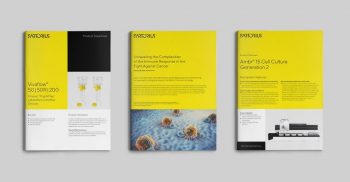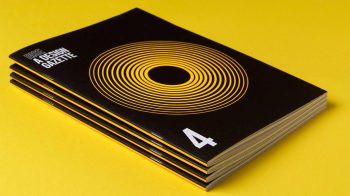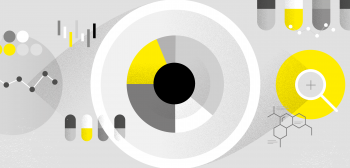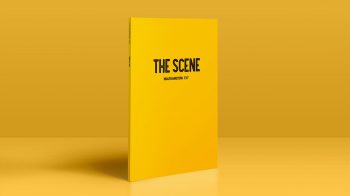Write your own brand statement
We’ve read a lot about brands and branding. Attended countless seminars, run many,written blogs, read countless more and helped many clients start, evolve or reboot them. And the more we work with brands, the more we appreciate just how complex they are.
The reason for this is simple. The subject has become the monster that’s eating itself. As the role of the brand in modern culture evolves,as their presence becomes ever more pervasive, through ever more personal and ‘always on’ media, the more it seems we lapse into the loose and often lazy use of language and terminology about them, leading to confusion, platitude, noise.
Which is why we decided to come up with our own, deliberately quick and hopefully simple guide to writing a brand statement.
Apologies in advance, but inevitably here comes our first definition:A brand statement is a short (ideally just a page) summary of the 3 key things any organisation that seeks to understand and use brand must have, namely:
– a purpose (in life)
– a vision (for the future)
– and a promise (to your customers).
These may already exist in your organisation, or this might be the first step in your particular brand journey, so this could be an exercise to validate thinking already done or a way to kick your brand in the pants.Wherever you are, over the next few pages our plan is to guide you through the process of writing your own brand statement in three simple steps.
Step 1
The purpose statement
Who are you?
Every brand document has to start somewhere, and the most logical place is at the beginning – with your purpose in life. That part of your brand that describes as clearly and simply as possible the basic purpose of your organisation.
This is, in effect, your ‘what we do all day statement’.
A purpose statement is not intended to be an active management tool, to measure decisions against – its use is functional and limited to the work of a simple business descriptor or boilerplate.
In an ideal world you should aim to state your purpose in 12 words or less. Here are some examples:
Google:
To make the world’s information universally accessible and useful.
Trip Advisor:
To help people around the world plan and have the perfect trip.
The BBC:
To enrich people’s lives with programmes and services that inform, educate and entertain.
With the advent of corporate social responsibility we are increasingly finding more and more examples of statements that touch on how an organisation behaves as well as what it does. The Virgin Group’s purpose for instance is ‘Changing business for good’. Luckily for us, they then go on to define in some detail what that actually means …
Other examples of this type of purpose include:
Ben and Jerrys:
Making the best possible ice cream, in the nicest possible way.
Patagonia:
Build the best product, cause no unnecessary harm, use business to inspire and implement solutions to the environmental crisis.
Step 2
The vision statement
What are you working to achieve?
A concrete statement of intent, expressed as measurable and defined goals, of what you all, as an organisation, want to achieve at some defined point in the future.This may already exist in the business plan but wherever it comes from, it should be something that everyone in your organisation is aware of, and can fully understand. For this is actually the point of the vision statement – to share a goal, to get everyone to work together, not in silos, collaborating to make ‘your’ vision of the future,a reality.
Remember these are not yearly or even 5-year targets, this is ‘beyond the horizon’ stuff that describes your ultimate goals or targets in specific and measurable terms.A note: numbers, dates and targets, like the statements themselves, are intended to be living, evolving things – that can and probably should change on a consistent basis.
Effective examples are hard to find but probably the most famous are:
Steve Jobs:
To put a computer on every desk.
Embellished by Bill Gates: A computer on every desk, in every home, running Microsoft software.
NASA (c1961):
To put a man on the moon by the end of the 1960s.
Cancer Research UK:
Our vision is to beat cancer.
And clearly, even here, three of the four best examples we could find are missing that ‘defined point in the future’ to fully explain the vision. To beat cancer is a fine and laudable vision, but when?
Step 3
The brand promise
And why should we care?
A brand is a promise after all so its logical that at the heart of any brand statement is your brand promise. It is the statement that you make to customers that tells them what they can expect from all the interactions they have with your people, products, services and company. And a strong brand promise is based on what, in all those interactions, distinguishes you from your competition.
It is the ultimate distillation of your brand communication, that on hearing it, your people, clients and potential recruits, can ‘get’ without explanation – which is why it often ends up as the company strap-line.
Slightly trickier, so lets take this in stages:
Part one
As a starting point, to get the juices flowing, complete this sentence:‘Our brand is the only ________ that _________.’
The first part is for your product category, the second, what makes you special in a way that matters to your customers.
Part two
When you are happy ask yourself this – as its the ‘only’ that ‘does’ – what does that mean beyond the experience of the thing you make or deliver – what’s the bigger message here?
Here are some well known examples to help explain what we mean:
Nike – To bring inspiration and innovation to every athlete in the world.
A statement that doesn’t mention Nike products, but instead makes a promise, implicit with an attitude and a quality, on an aspirational scale much larger than that of a sports clothing and equipment supplier.
Apple – Think different
Apple’s brand promise is two-sided – a guarantee to create products based on seeing the world a little differently, and a promise to inspire their customers to do the same. Think about how much stronger it sounds than ‘we think differently’. That’s just vague hand waving, but ‘think different’ is a challenge and an action all in itself.
Instead of mentioning soft drinks, Coke aims to promote a mind set as its brand promise– it promises a lifestyle that is much more to you than just a soft drink. It will not only refresh your palate, but also your mind, body and spirit, and in the process make a difference to the world as well.
Conclusion
If you are still with us – then well done. In itself, this exercise was designed to help organise your thoughts simply and logically around three very simple but very important aspects of your brand – using some famous examples along the way. But if you’ve found it interesting, and since you’ve stuck with us from the start anyway,why not have a go at writing yours?















